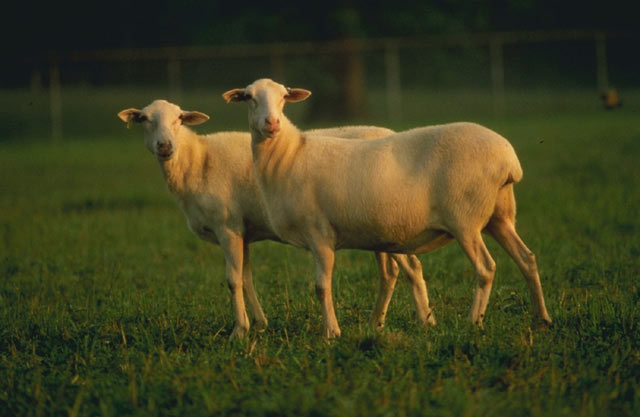The St Croix (Saint ‘Croy’) is a breed of domestic sheep native to the U.S. Virgin Islands and named for the island of Saint Croix. They are often also called Virgin Island White because those that were imported into North America were selected for white colouration. On the Island of St. Croix, they come in shades of brown, white and black.
The breed is believed to be descended from African sheep that were brought to the Caribbean on slave ships and is a breed of hair sheep which does not grow wool. The St Croix is a hardy tropical breed known for its parasite resistance and is raised primarily for meat production. Breeders have crossbred the St Croix with other breeds to impart these important traits into their bloodlines. The St Croix breed is the foundation breed for Katahdin and Royal White breeds.
Characteristics
Most St. Croix are completely white with others being solid tan, brown, black or white with brown or black spots. Ewes and rams are polled (no horns), and rams have a large throat ruff. Mature ewes weigh 68 kg (150 lbs) and rams weigh 90 kg (200 lbs). Birth weights average 2.7 kg (6 lbs) to 3.1 kg (7 lbs). The tail should not need docking.
Adaptability
St. Croix sheep can live in a wide variety of climates. They are well adapted to the hot humid climate of the tropics and can survive in cold temperatures. Their hair coat lets them tolerate the heat, and they grow a thick wool coat in cold winter temperatures. Their coat sheds water. These sheep are known as ‘Parasitic Pasture Vacuums’ for their ability to clear a pasture of parasites reducing the need to worm sheep. This trait can be beneficial in producing parasite resistant crosses with meatier carcasses than purebred St. Croix alone. In 2012, Langston University in Oklahoma began a three-year study that included a flock of Persimmon Creek St. Croix Dorper crosses that had not been wormed for several years and had been selectively culled for parasite resistance. This flock demonstrated very low faecal egg counts despite ingesting large amounts of eggs under study conditions.
St. Croix also shows resistance to hoof rot. Due to their hair shedding ability, sheep should be flystrike resistant.
Reproductivity
Ewes and rams hit puberty just after 3 months old. Lambs should be separated from their mother after 60 days to prevent impregnation of the ewe. At the age of 7–8 months, ewe lambs should have their first estrus cycle. Ewes will ovulate during all months of the year, not following a seasonal breeding period like most sheep. Ewes can lamb at 12 months of age. Ewes can have two lamb crops in a year, sometimes three in two years. One to four lambs in one lamb crop are possible, with twins being the most common. St. Croix sheep have high lamb survivability and the ewes are instinctive mothers, usually not requiring much help. Ewes also produce plenty of milk for their lambs.
